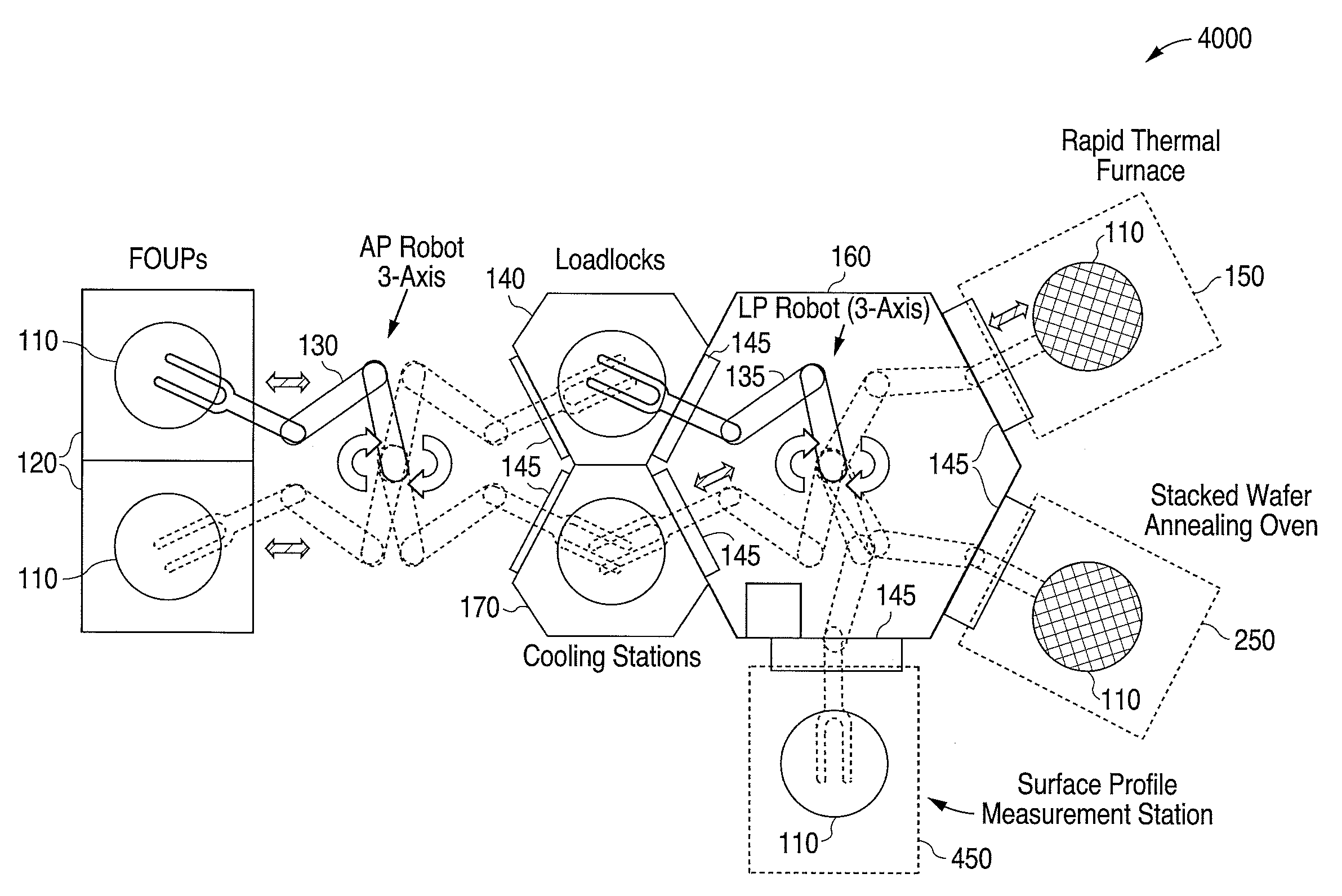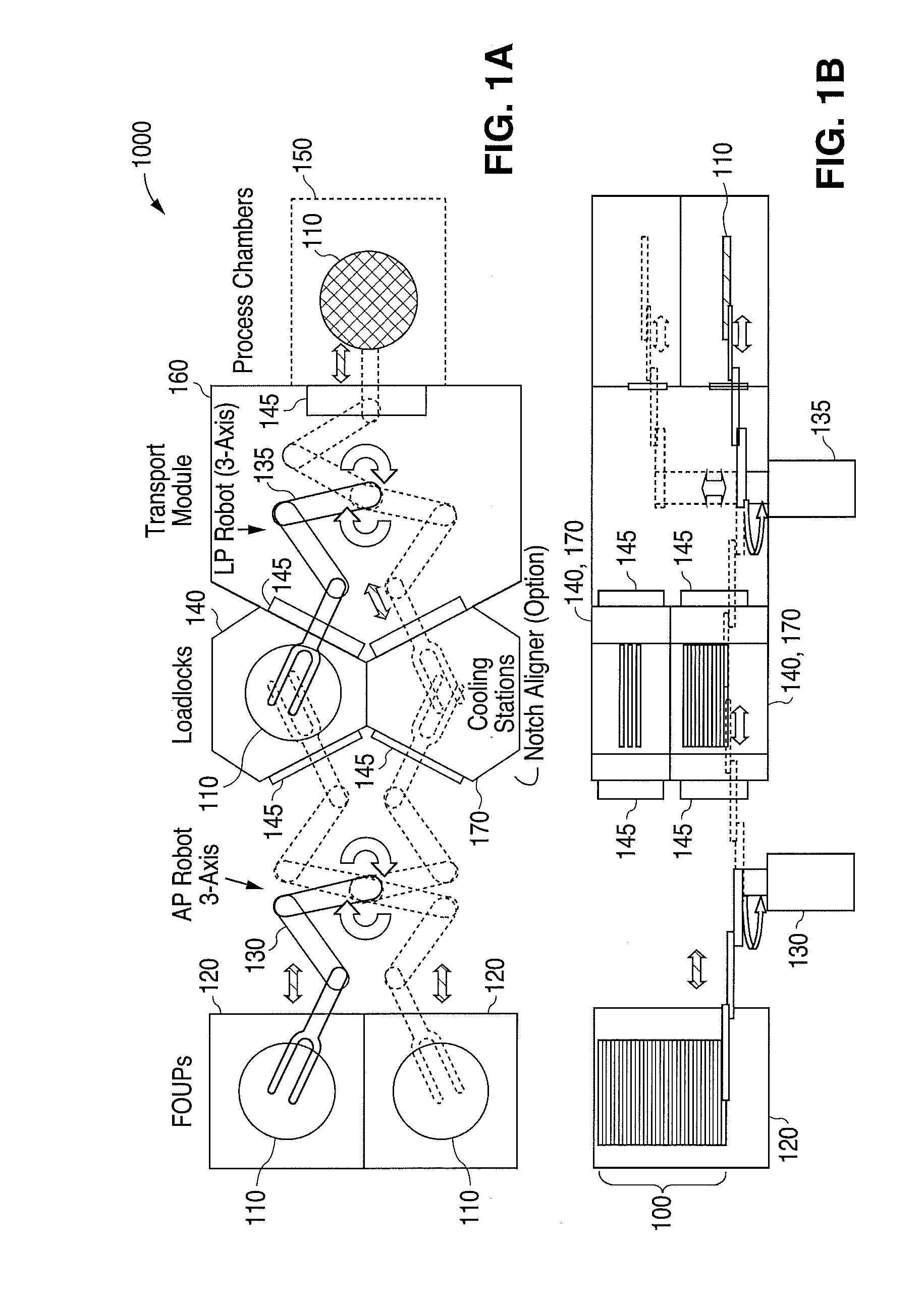In-line wafer robotic processing system
a robotic processing and wafer technology, applied in the field of systems and methods for wafer processing, can solve the problems of inability to meet the needs of rtp or sao in a continuous processing operation, the cost per square foot is not readily available, and the vacuum or other pressure in the clean room is not readily availabl
- Summary
- Abstract
- Description
- Claims
- Application Information
AI Technical Summary
Benefits of technology
Problems solved by technology
Method used
Image
Examples
Embodiment Construction
[0029]FIG. 1A is a top view of an in-line single wafer robotic rapid thermal processing furnace system 1000, according to one embodiment of the disclosure. FIG. 1B is a side view of the in-line single wafer robotic rapid thermal processing furnace system 1000, as shown in FIG. 1A. In the embodiment shown in FIGS. 1A and 1B, it is noted that various modules may be positioned vertically as well as horizontally, thereby reducing the footprint of system 1000.
[0030]System 1000 may operate entirely within a clean room, where environmental characteristics including at least particulate filtration, temperature, and humidity are controlled. Vertically stacked sets 100 of horizontally oriented wafers 110 may be obtained from or returned to one or more vertically and / or horizontally positioned front opening unified pods (FOUPs) 120 by a clean room ambient pressure (AP) robot arm 130. The stacking of sets 100 and orientation of wafers 110 is exemplary, and not limiting in accordance with the di...
PUM
 Login to View More
Login to View More Abstract
Description
Claims
Application Information
 Login to View More
Login to View More - R&D
- Intellectual Property
- Life Sciences
- Materials
- Tech Scout
- Unparalleled Data Quality
- Higher Quality Content
- 60% Fewer Hallucinations
Browse by: Latest US Patents, China's latest patents, Technical Efficacy Thesaurus, Application Domain, Technology Topic, Popular Technical Reports.
© 2025 PatSnap. All rights reserved.Legal|Privacy policy|Modern Slavery Act Transparency Statement|Sitemap|About US| Contact US: help@patsnap.com



